Summary: Many people look at the US economy since the crash and deny there has been a recovery. Or a “real” recovery. That’s false. This is the 5th in a series about our recovery; today we examine those parts of the US economy that have recovered — some even making new highs. That’s too bad for the laggards, such as most Americans, but does not make the recovery less real. It does mean that the recovered sectors are unlikely accelerators of future growth.
Contents
- Wages – the big “tell”
- Vehicles
- Business capital expenditures
- Consumer Credit outstanding
- Housing – our savior?
- Other posts in this series
- For More Information
Before we look at the strong sectors, note the big “tell”. The government’s stimulus programs have boosted profits and increased wealth of the 1%. But they have not brought much benefit to most Americans. Inequality has risen, real wage growth stagnate. Here’s the latest in a long stream of evidence, from the Bureau of Labor Statistics. This suggests that a fundamental shift has occurred in the structure of the US economy, as we passed a tipping point beyond which prosperity only trickles down.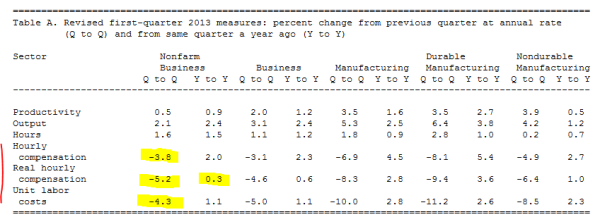
(2). Motor Vehicles
Already recovered, and has risen slightly above the Q3 2005 peak to a new high.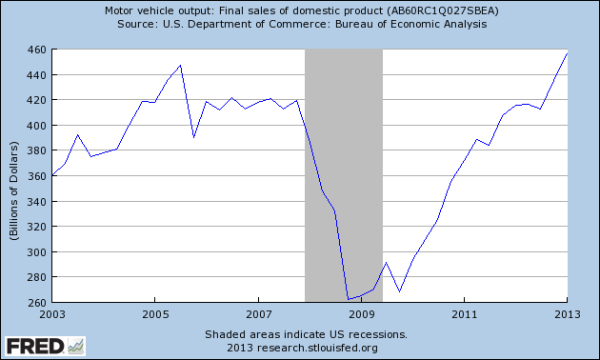
(3) Business capital expenditures
It’s recovered, and has risen above the Q3 2007 peak to a new high.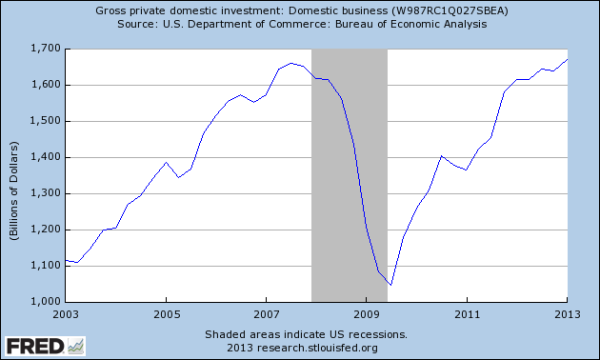
(4) YoY Change in Total Consumer Credit outstanding (excluding Federal loans), NSA
Federal consumer lending is all education loans, the new subprime (despite what you read at Zero Hedge). Consumer credit excluding Federal lending is growing slowly; it has accelerated up to 2.5%/year. Interestingly, it’s now growing at the same rate as retail sales — but retail sales were growing at 5% in 2010, and have slowed to 2.5%. These two series have crossed.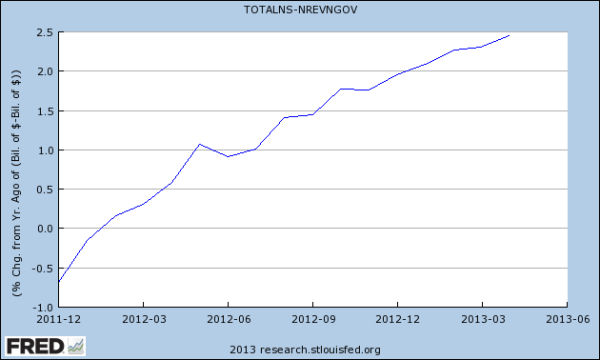
(5) Housing – our savior?
Many people believe that the Fed seeks to recreate the housing bubble, boosting home construction and re-starting home equity extractions. Here are two measures of their little success: single-family home starts and residential construction share of GDP. This is the biggest potential driver of a boom in the US economy. Opinions differ on the likelihood of that happening. The rise in real rates during the past 18 months, and the recent spike in nominal rates, make a boom even less likely.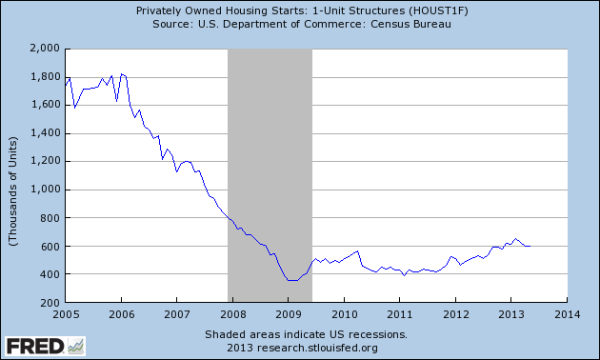
Housing as a share of GDP has grown from the 2011 low of 2.2% to 2.7% — slowly increasing at 0.1% of GDP per quarter. No signs yet of acceleration.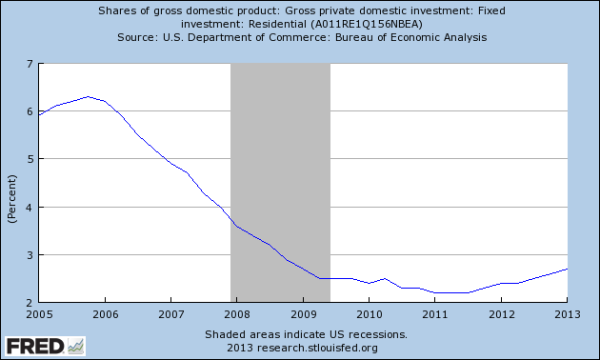
(6) Other posts in this series
Better days are coming, for some of us.
- The April jobs report shows continued slow growth, bought at great cost, May 2013
- The greatest monetary experiment, ever, June 2013
- Status report on the US economy. Recession? Collapse?, 25 June 2013
- Look at the US economy: see the trends!, 1 July 2013
- Good news about the US economy!
Posts about the condition of and trends in the US economy:
- What are the limitations of the Fed’s power? It’s neither impotent nor omnipotent!, September 2012
- The lost history of money, an antidote to the myths, December 2012
- Monetary Magic applied to cure America’s economic ills, February 2013
- The World of Wonders: Everybody Goes Nuts Together, February 2013
